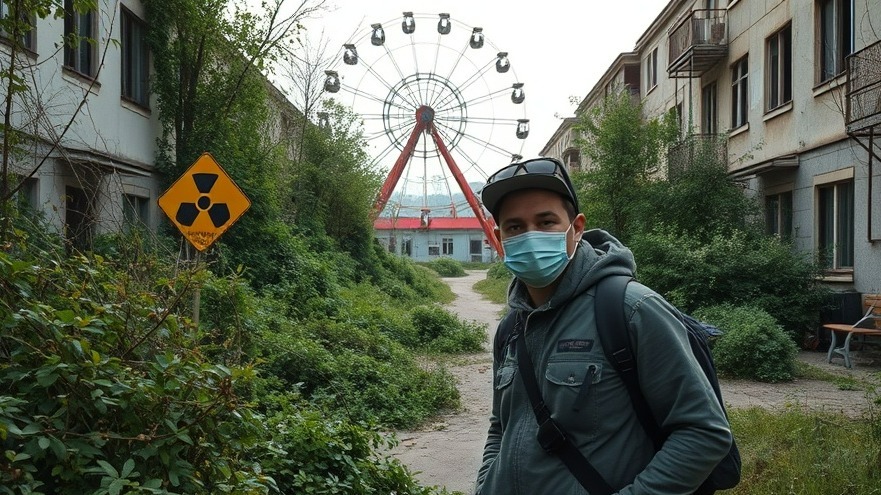
Chernobyl: A Cautionary Tale for Travelers
In a world where adventure often takes precedence over caution, recent footage of tourists perched on a notorious radioactive claw in Chernobyl has sent shivers down the spine of safety advocates and health experts. These young adventurers, blissfully unaware of the tarnished legacy they perchered upon, raised questions about the real dangers of such a visit to the Chernobyl Exclusion Zone, nearly four decades after the catastrophic nuclear disaster.
Understanding the Radiation Risks
At the center of the controversy is 'The Claw', a piece of heavy machinery instrumental in the post-disaster clean-up, now a quintessential symbol of the disaster. Experts caution that while the claw remains highly contaminated, brief exposure leads to only minimal radiation dose— levels comparable to that of a standard chest X-ray. This revelation prompts crucial conversations about how we assess risk and manage our fears when faced with potentially hazardous environments.
Distinguishing Reality from Radiophobia
The term “radiophobia” denotes an overwhelming fear of radiation illnesses that may not be grounded in immediate risks. Medical professionals emphasize the fact that while the dangers of prolonged exposure are significant, fleeting contact with the claw—a decision most tourists might not have considered—is unlikely to result in fatal consequences. However, the psychological component of anxiety about radiation cannot be dismissed—it underscores the importance of communication in dispelling fears that might arise after nuclear incidents.
Best Practices for Chernobyl Visitors
For medical concierge practice owners with clientele curious about travel safety, this scenario serves as a stark reminder of the importance of adhering to safety protocols. Chernobyl tourism is heavily regulated, requiring visitors to follow stringent guidelines. Guided tours, mandatory dosimeters, and protective clothing ensure that tourists minimize their exposure to radiation.
The necessity of such measures highlights the need for health professionals—including those in concierge medicine—to advocate for safe travel practices among their patients, thereby reinforcing the motto: ‘an informed traveler is a safe traveler.’ For patients hoping to explore the remnants of history, understanding the risks and adhering to safety measures is paramount.
The Bigger Picture: Impacts on Mental Health and Well-being
For concierge medical practice owners, it's crucial to consider the broader implications of health communication, particularly in instances where fear and misperceptions intersect with reality. Individuals experiencing anxiety about radiation may find solace in discussing these fears with their healthcare providers. By fostering open communication regarding the known risks and realities of radiation exposure in places like Chernobyl, practitioners can significantly enhance their patients’ peace of mind.
Conclusion: The Moments That Matter
Ultimately, while the notion of taking selfies on a notorious piece of machinery might feel exciting in the moment, it’s essential to remember the historic lessons of Chernobyl. Vital takeaway for practices lies not in stifling adventure but in ensuring that patients are informed and safe. As you grow your local concierge practice, use this incident as an illustrative example to empower your patients with knowledge and understanding of health risks, especially those related to travel.
Engagement with patients regarding safe practices not only establishes trust but also positions your concierge practice as a supportive and caring partner in their health journey, fostering long-term relationships grounded in mutual respect and understanding.
 Add Row
Add Row  Add
Add 




Write A Comment